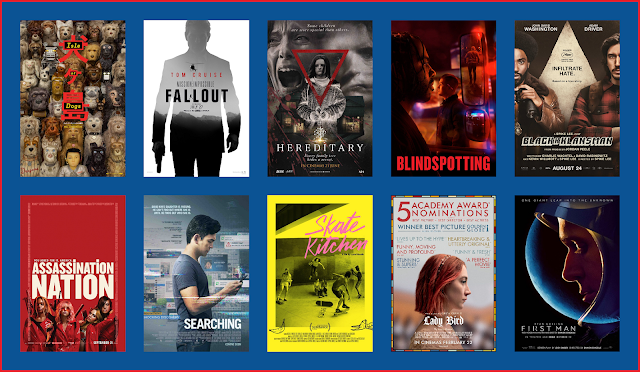The Call of the Wild Review
(A version of this article originally appeared on kernelnow.com / mynewslike.com)
Jack London’s The Call of the Wild, referred to as a “legendary novel” in the promotion for this film, has proved an inspiration to film-makers since the earliest days of cinema. The first adaptation came as a silent film in 1923 and since then at least six more have followed on-screen, starring silver screen legends such as Clark Gable, Charlton Heston and Rutger Hauer. This latest realization brings with it a very cinematic coincidence: the first film to adapt the book whilst featuring sound came in 1935, and was the last film to be released under the Twentieth Century Pictures banner before that studio merged with Fox to become Twentieth Century Fox. Some 85 years later, this new film comes as the first release under the Twentieth Century Studios name after Disney’s mega-purchase of Fox last year.
It’s also a first for director Chris Sanders (Lilo & Stitch, How to Train Your Dragon), coming as his debut turn behind a live-action feature film. Harrison Ford stars in the lead human role and is, in many ways, a natural successor to rugged icons such as Heston and Gable. His four-legged co-star “Buck” is neither human nor animal, instead a purely CGI creation based on a real-life rescue dog called Buckley and the work of stunt coordinator Terry Notary. Like previous works based on the book, the film follows Buck and, eventually, John Thornton (Ford) in their adventure across the great frozen frontier that is the Yukon wilderness.
 |
| One Han and his dog: John and Buck seek a new life (source: Twentieth Century Studios) |
The prospect of adventure charges through the life of this film. Buck finds a pure form of discovery as he ventures North alongside his human ally, the two not in the pursuit of gold or fame but instead on the trip of a lifetime with strong links to John’s tragic past. In becoming something of an emotional support dog (and in a tough and reserved period of history, perhaps the first of his kind), the big-hearted four-legged hero proves keen to help his new master find some form of peace. This is thus a very sweet, almost tender story; though more world-weary than cranky, Ford’s character still needs something to help him rediscover the beauty of the world. Certainly, there are worse places to do so than the untouched Northern wilderness.
Though they cross paths first soon after Buck is forcibly taken to the snow-swept Yukon, John is not his first owner. Before his kidnapping, he starts off as a playful but problematic house dog of a Santa Clara judge; then, after a harsh voyage to his new surroundings, he is introduced to a dog-sled team by pair of (presumably) French-Canadien post workers, Perrault and Françoise (Omar Sy and Cara Gee). It’s here that the “call of the wild” first speaks to Buck as he starts to become comfortable with his new home and amongst other dogs. Buck and his sled mates are then bought by a corrupt prospector called Hal (Dan Stevens), a man whose regard for the dogs is even colder than the environment they traverse.
 |
| Buck and his temporary family, the Yukon Postal Service (source: Twentieth Century Studios) |
This first act does feel a little rushed; the film’s story (and poster, and trailer) focused so heavily on the companionship between Buck and John that the path to get there is, inevitably, hurried. Hal also feels like a contrived attempt to introduce a villain to the film, coming to haunt his former four-legged charge even after their bitter split. What these scenes do offer, however, is a chance for the film to let the dogs tell the story – as Buck learns the ways of his pack he communicates with them in a purely-canine manner, without the need for clichés like talking pups or subtitled barks. As Françoise says after a particularly transformative scene, “I think they know something you don’t”; it cannot be a coincidence that such a celebrated story would provide a well-realized take on a previously lagging idea.
Unfortunately, whilst the performance of the dogs is rewarding, their visual portrayal is somewhat lacking. It’s hard to find the right word to describe just exactly what is unnerving about Buck and his fellow canine creations – perhaps its that they look too slight, or a little coarse – but something about them is quite simply… off. The expressions of the dogs are accurate, showing once again the ability of motion-capping, it’s just that the finished models themselves are more than a little discordant. A shame, too, as the visuals throughout the rest of the film are more than impressive – in particular, the portrayal of the Great North speaks for itself. Though the outback of Southern California is used as a double for the film’s frosted forests and bountiful Edens, these unknown territories offer a much more inviting landscape to tame than is typical of 1800s North American “no man’s lands”.
 |
| The two adventurers, and a world of opportunity before them (source: Twentieth Century Studios) |
In its core quest, however, The Call of the Wild offers a much more honest and developed endeavor for man’s best friend. Unlike most “dog movies”, director Sanders and writer Michael Green don’t just rely on their fluffy, tail-wagging characters just to deliver a poignant gut punch. This isn’t a story that uses dogs, it’s a story about dogs; for once, the relationship between human and canine is used to offer up a tale of exploration, friendship and above all else, belonging.



Comments
Post a Comment